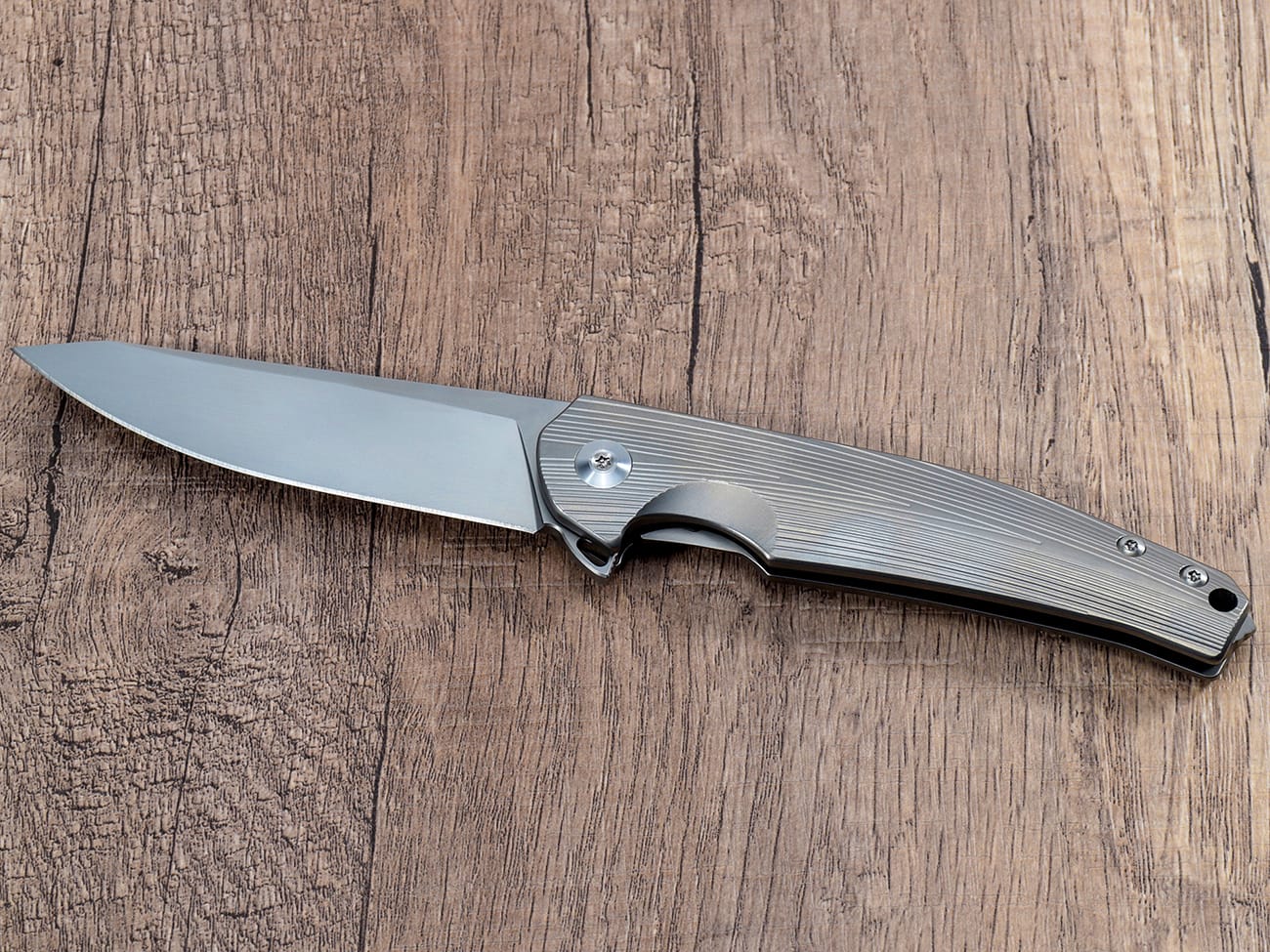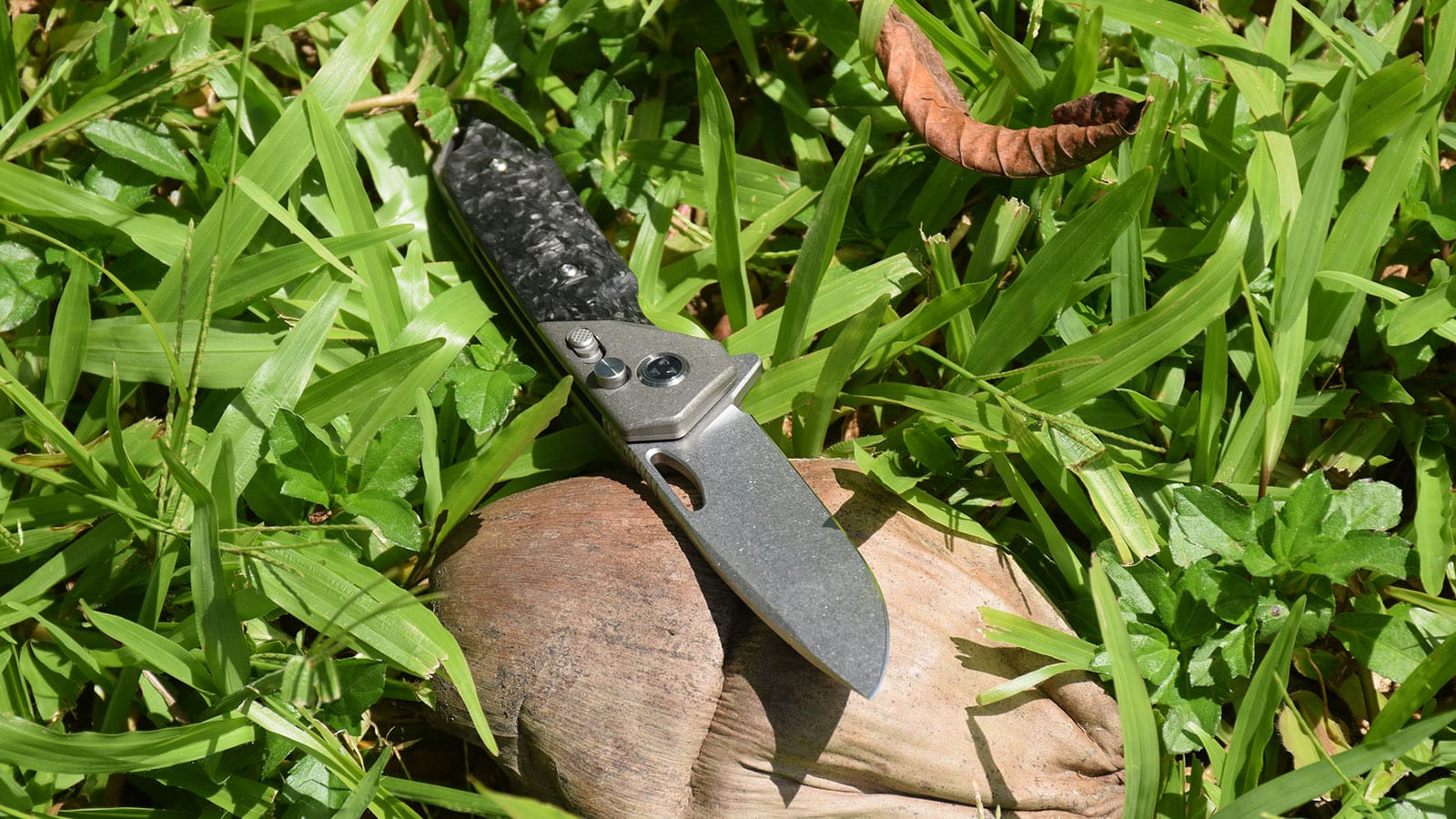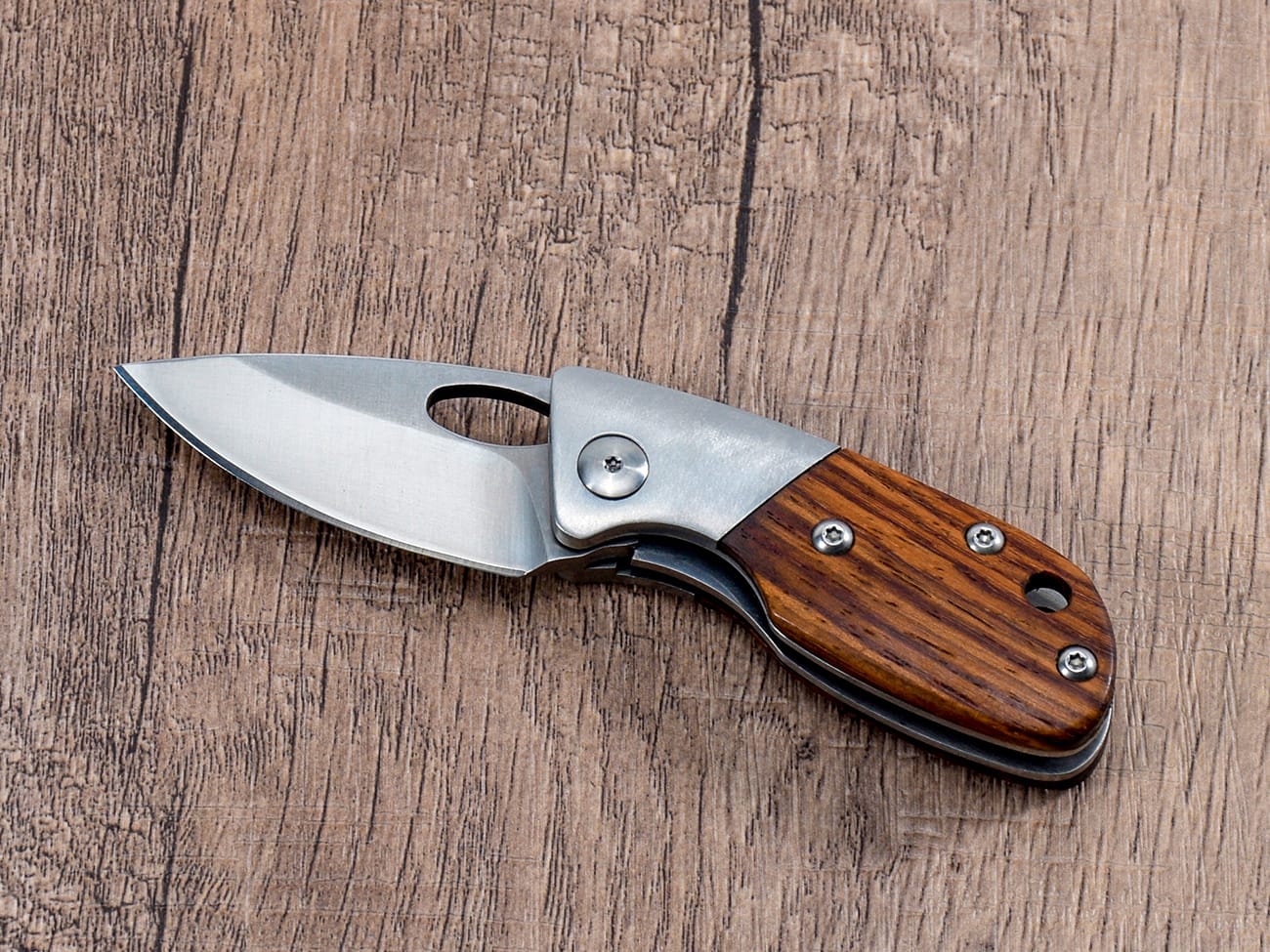When it comes to choosing the best knife handle material, titanium and carbon fiber are two popular options that often stand out. Both materials offer unique properties that can significantly impact your knife’s performance, durability, and overall feel. In this comprehensive guide, we’ll dive deep into the world of knife handle materials, comparing titanium and carbon fiber to help you choose the right one for your needs.
Why This Article is Worth Reading
Whether you’re a knife enthusiast, an outdoor adventurer, or simply someone looking for the perfect everyday carry (EDC) knife, understanding the differences between titanium and carbon fiber handles can greatly influence your decision. We’ll explore the strengths and weaknesses of each material, helping you make an informed choice that suits your specific requirements.
What Are Titanium Knife Handles?
Titanium has gained popularity in the knife community for its exceptional strength-to-weight ratio. But what exactly makes titanium handles stand out?
Properties of Titanium Handles
- Lightweight: Titanium is remarkably light, making it ideal for EDC knives and reducing overall knife weight.
- Durability: Known for its incredible strength, titanium handles can withstand significant wear and tear.
- Corrosion Resistance: Titanium naturally resists corrosion, making it suitable for various environments.
Advantages of Titanium Handles
- Strength: Titanium handles offer exceptional durability, making them ideal for heavy-duty use.
- Long-lasting: With proper care, titanium handles can last a lifetime.
- Aesthetics: The ability to anodize titanium allows for a wide range of color options.
Disadvantages of Titanium Handles
- Cost: Titanium is generally more expensive than other handle materials.
- Texture: Some users find titanium handles slippery, especially when wet.
What Are Carbon Fiber Knife Handles?
Carbon fiber has revolutionized many industries, including knife manufacturing. But how does it perform as a handle material?
Properties of Carbon Fiber Handles
- Extremely Lightweight: Carbon fiber is even lighter than titanium, making it perfect for ultralight knives.
- Strength: Despite its light weight, carbon fiber offers impressive strength.
- Rigidity: Carbon fiber handles provide excellent stiffness, enhancing overall knife performance.
Advantages of Carbon Fiber Handles
- Weight Reduction: Carbon fiber handles significantly reduce knife weight, ideal for backpacking and EDC.
- Aesthetics: The unique weave pattern of carbon fiber is visually appealing to many knife enthusiasts.
- Temperature Resistance: Carbon fiber handles remain comfortable in extreme temperatures.
Disadvantages of Carbon Fiber Handles
- Brittleness: While strong, carbon fiber can be more prone to chipping or cracking than metal handles.
- Cost: High-quality carbon fiber handles can be expensive.
How Do Titanium and Carbon Fiber Handles Compare in Durability?
When it comes to longevity, both materials have their strengths. Titanium excels in impact resistance and overall toughness, while carbon fiber offers excellent resistance to environmental factors.
Titanium Durability
- Impact Resistance: Titanium can withstand significant impacts without deforming.
- Scratch Resistance: While not scratch-proof, titanium handles tend to hide minor scratches well.
- Corrosion Resistance: Titanium’s natural resistance to corrosion makes it ideal for marine environments.
Carbon Fiber Durability
- Chemical Resistance: Carbon fiber handles resist most chemicals and solvents.
- UV Resistance: Unlike some materials, carbon fiber doesn’t degrade under sunlight exposure.
- Fatigue Resistance: Carbon fiber handles maintain their properties over time, resisting fatigue.
Which Material Offers Better Grip?
Grip is crucial for safe and effective knife use. How do titanium and carbon fiber compare in this aspect?
Titanium Grip
- Smooth Texture: Unmodified titanium can be slippery, especially when wet.
- Texture Options: Many manufacturers add texturing or patterns to improve grip.
- Anodizing: Anodized titanium can provide a slightly better grip than raw titanium.
Carbon Fiber Grip
- Natural Texture: The weave pattern of carbon fiber offers some inherent grip.
- Customization: Carbon fiber can be molded with various textures for improved grip.
- Dry Performance: Carbon fiber typically provides excellent grip in dry conditions.
How Do Titanium and Carbon Fiber Handles Affect Knife Weight?
Weight is a crucial factor for many knife users, especially those who carry their knives daily or for extended periods.
Titanium Weight Characteristics
- Lightweight: Titanium is about 45% lighter than steel, significantly reducing overall knife weight.
- Strength-to-Weight Ratio: Titanium offers excellent strength without adding excessive weight.
- Balance: Titanium handles can help balance heavier blade materials.
Carbon Fiber Weight Characteristics
- Ultralight: Carbon fiber is even lighter than titanium, making it ideal for minimalist designs.
- Customizable Weight: The layering process of carbon fiber allows for fine-tuning of handle weight.
- Strength Retention: Despite its light weight, carbon fiber maintains impressive strength.
What Are the Aesthetic Differences Between Titanium and Carbon Fiber Handles?
Appearance plays a significant role in knife selection for many enthusiasts. Both materials offer unique aesthetic qualities.
Titanium Aesthetics
- Metallic Sheen: Titanium has a distinctive, subtle metallic appearance.
- Anodizing Options: Titanium can be anodized in various colors for customization.
- Minimalist Look: Many appreciate the clean, modern look of titanium handles.
Carbon Fiber Aesthetics
- Distinctive Weave: The visible fiber weave pattern is a hallmark of carbon fiber handles.
- Depth and Texture: Carbon fiber can have a 3D appearance, adding visual interest.
- Color Options: While typically black, carbon fiber can be produced in various colors.
How Do Manufacturing Processes Differ for Titanium and Carbon Fiber Handles?
The production methods for these materials significantly impact their properties and cost.
Titanium Manufacturing
- Machining: Titanium handles are often CNC machined from solid blocks.
- Forming: Some handles are formed from titanium sheets.
- Finishing: Processes like bead blasting or anodizing are common for titanium handles.
Carbon Fiber Manufacturing
- Layering: Carbon fiber handles are created by layering carbon fiber sheets with resin.
- Molding: The layered material is then molded into the desired handle shape.
- Finishing: Carbon fiber handles may be polished or coated for additional protection.
What Are the Cost Implications of Choosing Titanium or Carbon Fiber Handles?
Both materials are generally more expensive than traditional handle materials like G10 or FRN.
Titanium Cost Factors
- Raw Material Cost: Titanium is a relatively expensive metal.
- Machining Difficulty: Titanium is harder to machine than many metals, increasing production costs.
- Durability: The long-lasting nature of titanium can offset its higher initial cost.
Carbon Fiber Cost Factors
- Production Complexity: The layering and molding process of carbon fiber is labor-intensive.
- Quality Variations: High-quality carbon fiber is more expensive but offers better performance.
- Customization Costs: Specialized weaves or colors can increase the price of carbon fiber handles.
How Do Environmental Factors Affect Titanium and Carbon Fiber Handles?
Different environments can impact handle materials in various ways.
Titanium Environmental Performance
- Corrosion Resistance: Titanium excels in marine or high-humidity environments.
- Temperature Tolerance: Titanium handles perform well in extreme temperatures.
- UV Resistance: Titanium doesn’t degrade under prolonged sun exposure.
Carbon Fiber Environmental Performance
- Chemical Resistance: Carbon fiber resists most chemicals and solvents.
- Temperature Stability: Carbon fiber maintains its properties across a wide temperature range.
- Water Resistance: While water-resistant, prolonged exposure can affect some carbon fiber handles.
Which Material is Best for Specific Knife Types?
The ideal handle material can vary depending on the knife’s intended use.
Titanium for Specific Knives
- EDC Knives: Titanium’s durability and weight make it excellent for everyday carry.
- Tactical Knives: The strength of titanium is well-suited for tactical applications.
- Marine Knives: Corrosion resistance makes titanium ideal for marine environments.
Carbon Fiber for Specific Knives
- Ultralight Backpacking Knives: Carbon fiber’s minimal weight is perfect for weight-conscious hikers.
- Gentleman’s Folders: The sleek appearance of carbon fiber suits dress or formal knives.
- Hunting Knives: Carbon fiber’s grip and light weight are advantageous in the field.

A custom D2 steel folding knife featuring a titanium handle and sanded blade, showcasing the sleek aesthetics and durability of titanium as a handle material.
How Do Titanium and Carbon Fiber Handles Impact Knife Maintenance?
Proper maintenance is crucial for knife longevity, regardless of handle material.
Titanium Handle Maintenance
- Cleaning: Simple soap and water are usually sufficient for cleaning titanium handles.
- Lubrication: Pivot points may require occasional lubrication.
- Anodizing Touch-ups: Worn anodizing can be reapplied if desired.
Carbon Fiber Handle Maintenance
- Cleaning: Mild soap and water work well, avoid harsh chemicals.
- Inspection: Regular checks for chips or cracks are recommended.
- Sealing: Some carbon fiber handles benefit from periodic resealing to prevent moisture ingress.
What Do Knife Enthusiasts Say About Titanium vs Carbon Fiber Handles?
Opinions in the knife community vary, but some common themes emerge.
Titanium Handle Opinions
- Many appreciate the durability and longevity of titanium handles.
- Some find titanium handles too slippery without added texturing.
- The ability to anodize titanium for customization is highly valued.
Carbon Fiber Handle Opinions
- The lightweight nature of carbon fiber is frequently praised.
- The unique aesthetics of carbon fiber are a significant draw for many.
- Some express concerns about long-term durability compared to metal handles.
How to Choose Between Titanium and Carbon Fiber Handles?
Selecting the right handle material depends on various factors:
- Intended Use: Consider your primary knife applications.
- Weight Preferences: Decide how important weight reduction is for you.
- Budget: Factor in the cost differences between the materials.
- Aesthetic Preferences: Choose based on your personal style and visual preferences.
- Environmental Considerations: Think about where and how you’ll use the knife most often.
Conclusion: Titanium vs Carbon Fiber – Making the Right Choice
Both titanium and carbon fiber offer exceptional qualities as knife handle materials. Titanium excels in durability, corrosion resistance, and long-term reliability, making it ideal for heavy-duty use and harsh environments. Carbon fiber, on the other hand, offers unparalleled lightweight properties and unique aesthetics, perfect for those prioritizing weight reduction and style.Ultimately, the choice between titanium and carbon fiber comes down to your specific needs, preferences, and budget. Consider the factors we’ve discussed, and don’t hesitate to handle knives with both materials to get a feel for what works best for you.Remember, the best knife handle material is the one that enhances your knife-using experience and meets your individual requirements.
Key Takeaways:
- Titanium offers superior durability and corrosion resistance.
- Carbon fiber provides exceptional lightweight properties and unique aesthetics.
- Both materials are generally more expensive than traditional handle materials.
- Titanium excels in heavy-duty and marine applications.
- Carbon fiber is ideal for ultralight and style-conscious users.
- Consider your specific needs, budget, and preferences when choosing between the two.
By understanding the strengths and limitations of titanium and carbon fiber handles, you can make an informed decision that will enhance your knife ownership experience for years to come.




